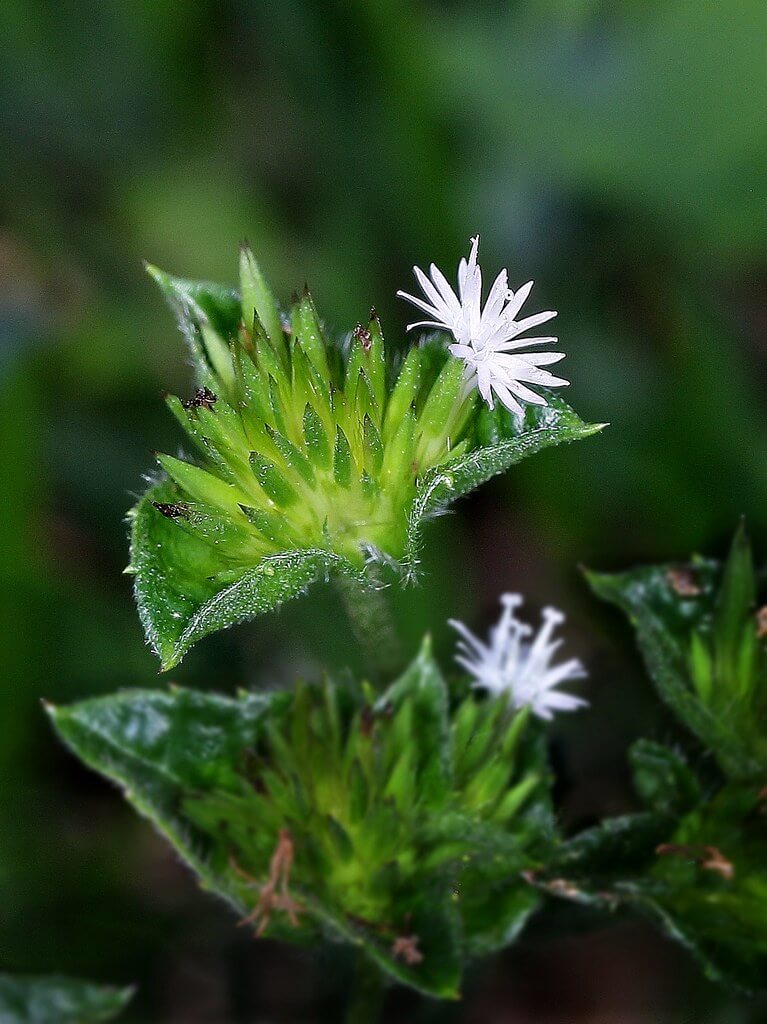What Does It Look Like?
What is it?
Tobacco Weed (Elephantopus mollis) is a slender, fast growing herb. Mature plants generally reach 30 to 150 cm high. The stem is more or less erect, sparsely branched and becoming woody at the base when mature. It is covered with fine white hairs which may cause skin irritation when brushed against. Tobacco Weed does not produce a taproot but has fibrous roots extending from the crown of the plant. No tubers or rhizomes or below ground buds are produced.
Its leaves, oblong or oval in shape and 10–20 cm long and 2–5 cm wide, are scattered alternately along the stems, and occur mostly at the base of the plant. The upper surfaces are rough and thinly covered in fine hairs. The under surfaces are densely haired and resinous, especially on veins.
The small, inconspicuous white flowers (rarely pink) are in many-headed clusters at the tips of the stems and side shoots. Three small leaf-like bracts cup each cluster. Individual flowers are tubular with five lobes at the apex and are about 4 mm long. The style is extended and surrounded by the stamens.
After flowering, a large number of 3 mm long brown to greyish-black seeds are released, each with 5 fine straight, white bristle-like hairs on the top (Land Protection 2006).
For further information and assistance with identification of Tobacco Weed contact the herbarium in your state or territory.
Flower colour
White, Pink
Growth form (weed type/habit)
Herb
Where it currently grows? Preferred habitat
Tobacco Weed is mostly a weed of wetter pastures, disturbed sites and waste areas in warmer areas, particularly subtropical and tropical regions (Navie 2004; Land Protection 2006).
Are there similar species?
The most closely related species to Tobacco Weed in Australia is Elephant's Foot (Elephantopus scaber) which is found in far north Queensland and the Top End of the Northern Territory. That species usually has blue, larger flowers than Tobacco Weed and relatively smaller and fewer leaves (Navie 2004; Land Protection 2006).
Tobacco Weed may also be confused with False Elephant's Foot (Pseudelephantopus spicatus). However, False Elephant's Foot has smaller, narrow leaves, its flower-heads are stalkless and clustered in the leaf forks (axils) and the two longest bristles on each seed are s-shaped (Navie 2004).





























